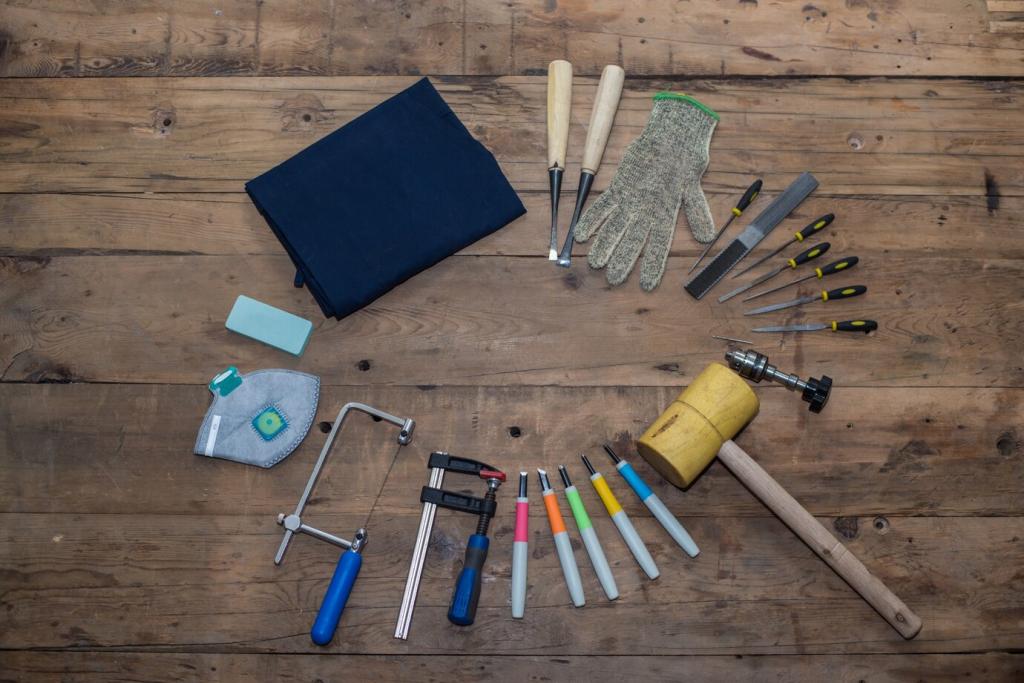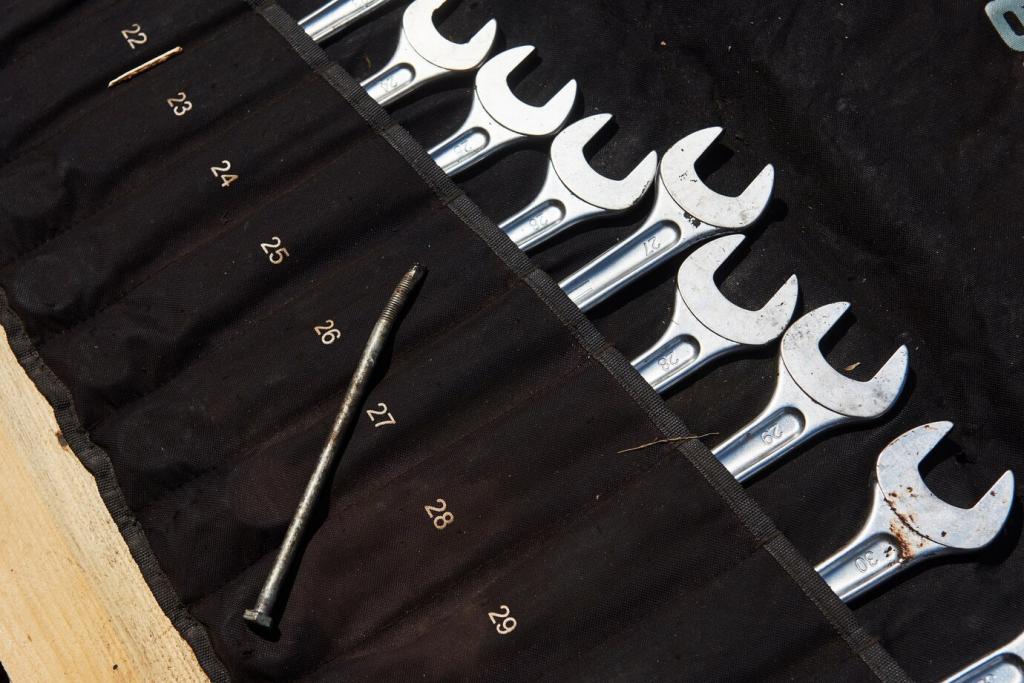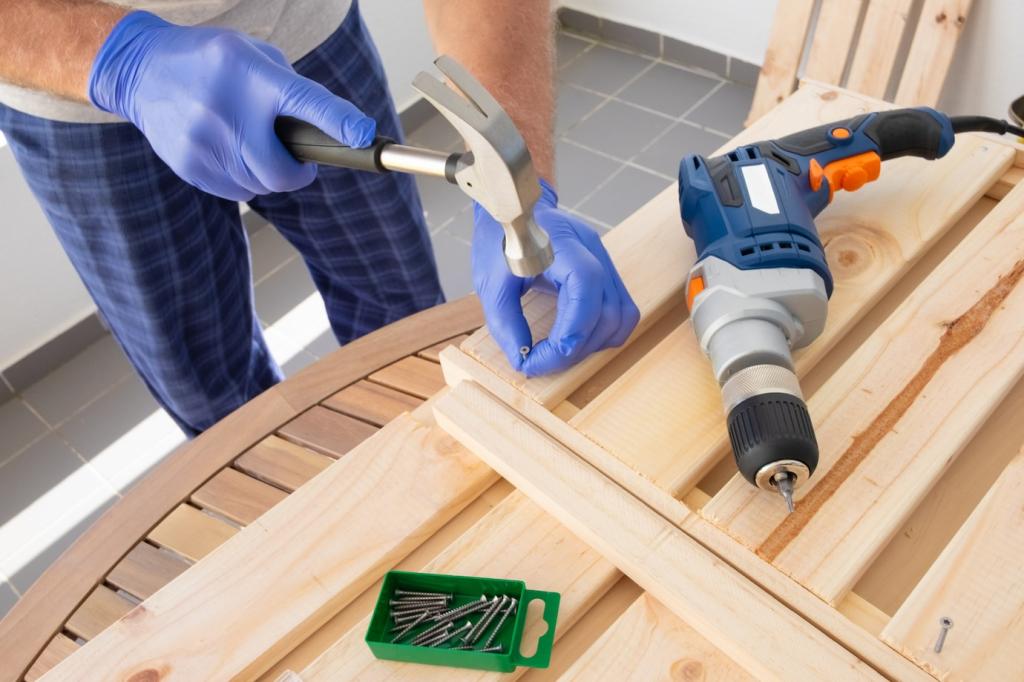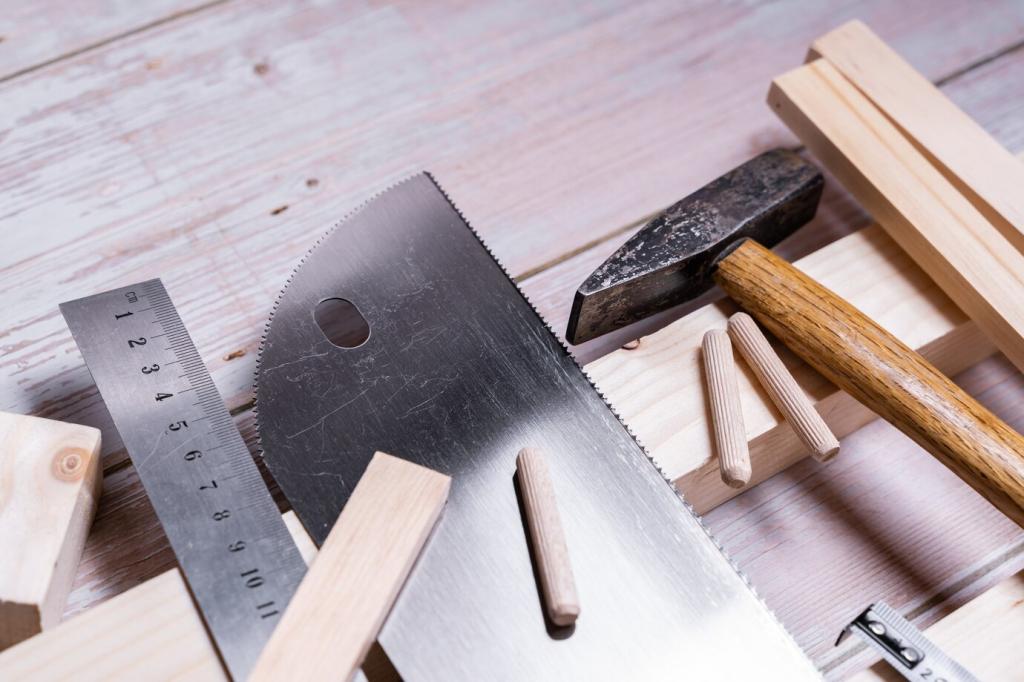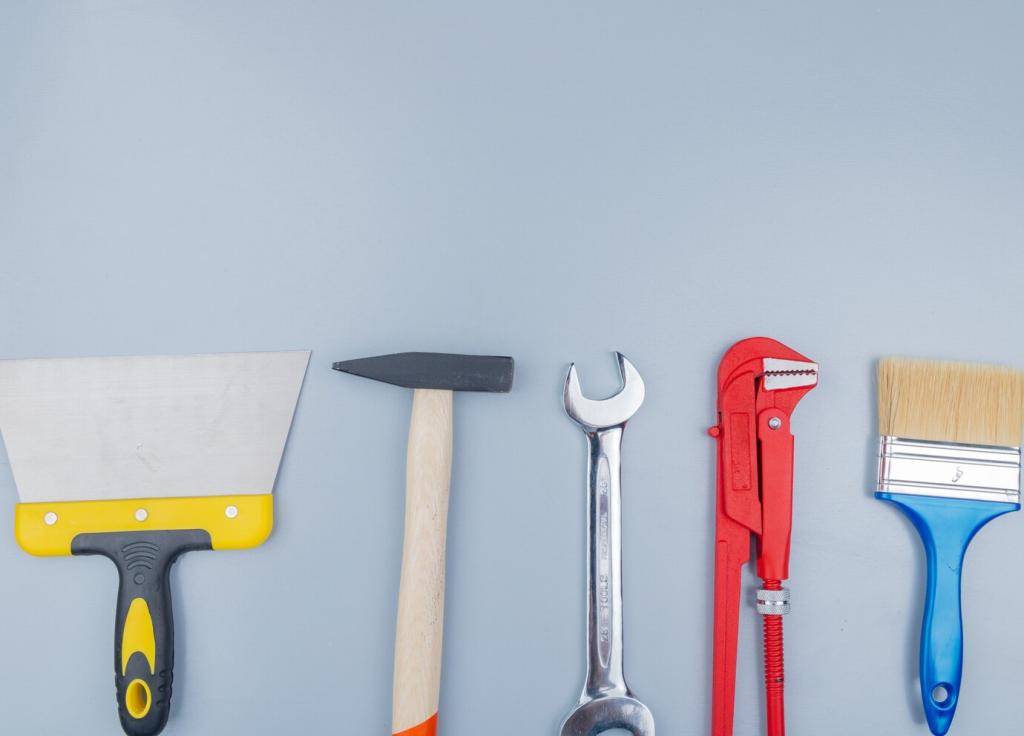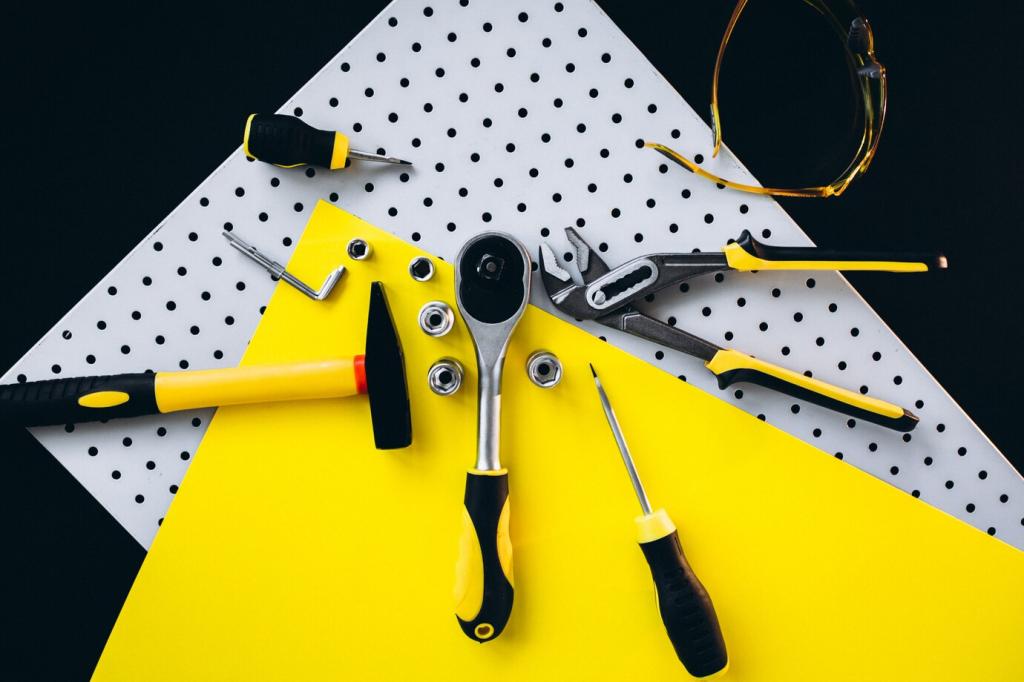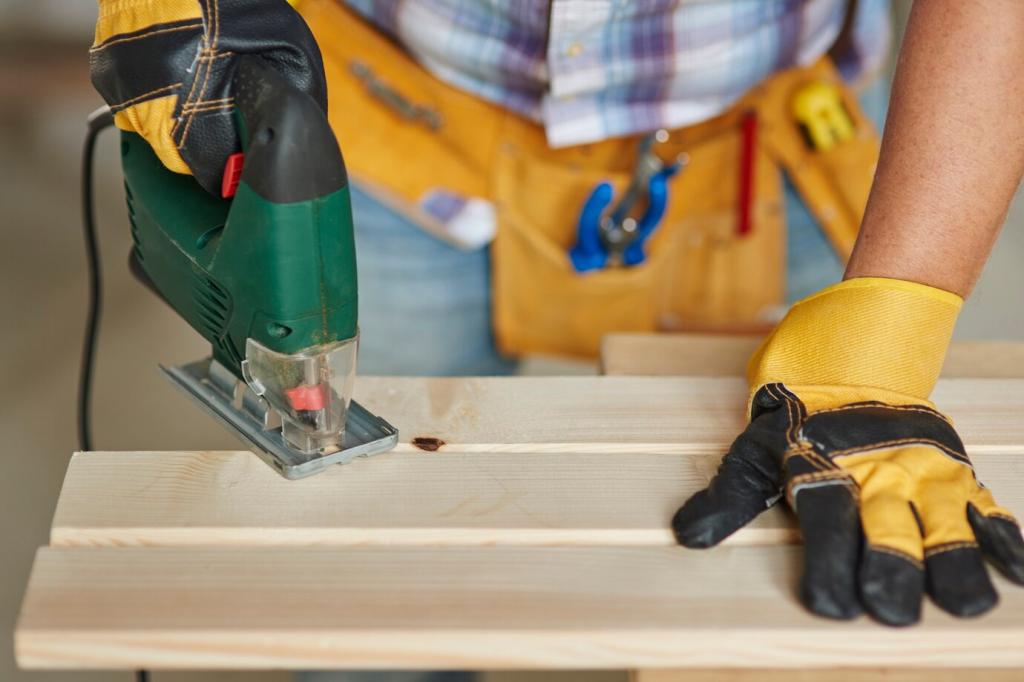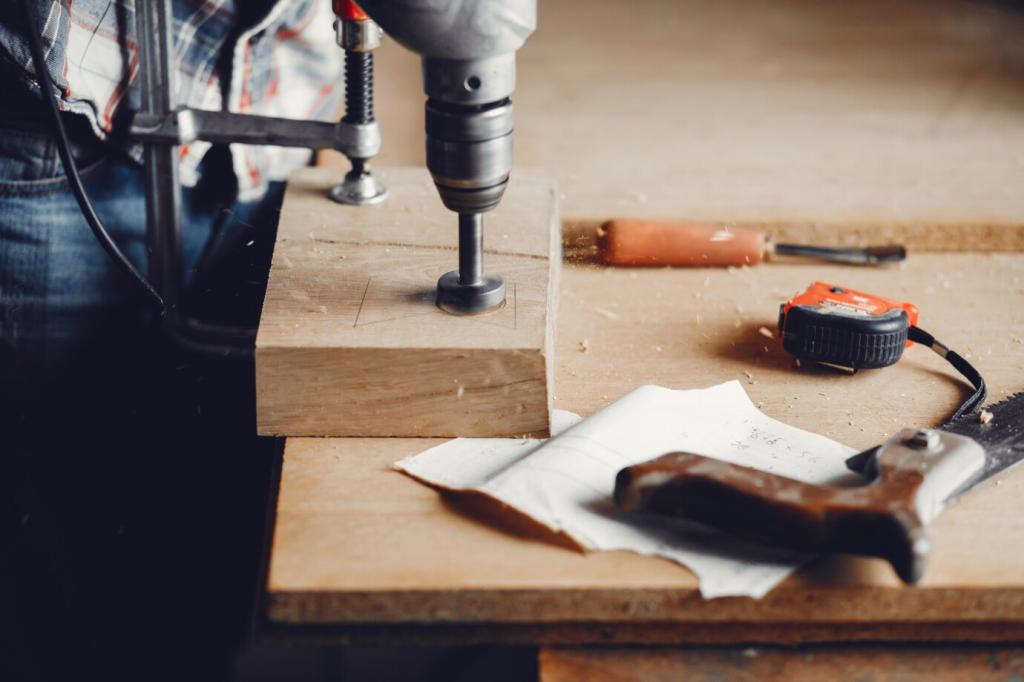Meet the Clamp Family for Furniture Repair
Bar clamps excel at long reaches across tabletops, pipe clamps deliver adjustable capacity on a budget, and parallel-jaw clamps keep faces dead flat. For delicate antiques, add wooden hand-screw clamps for nuanced pressure control that respects fragile edges.
Meet the Clamp Family for Furniture Repair
A clamp’s throat depth decides whether pressure lands where it should, not just at the edge. Wider pads spread force and prevent dents. Swap to soft pads or cork-faced cauls when repairing veneered or curved furniture parts requiring gentle protection.

